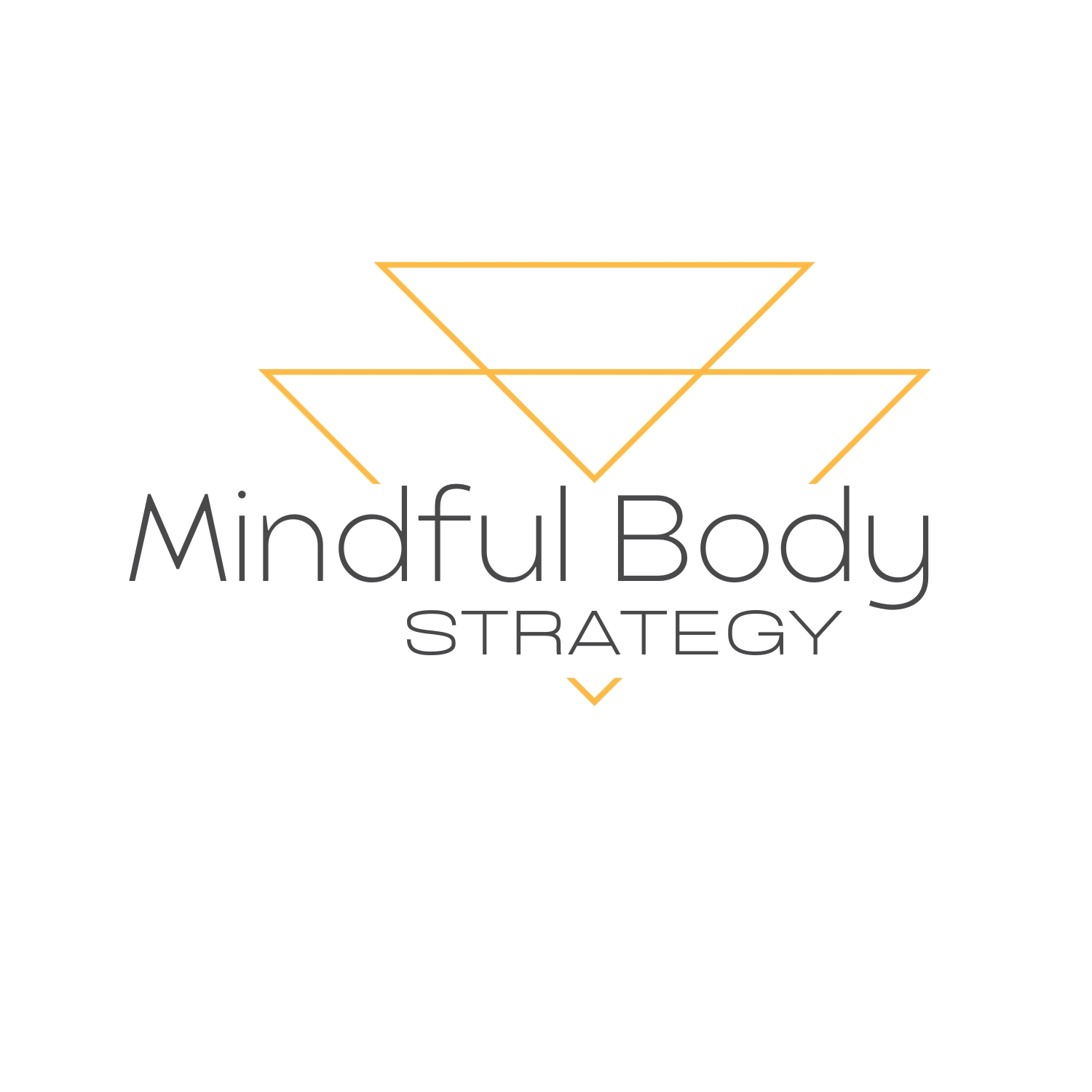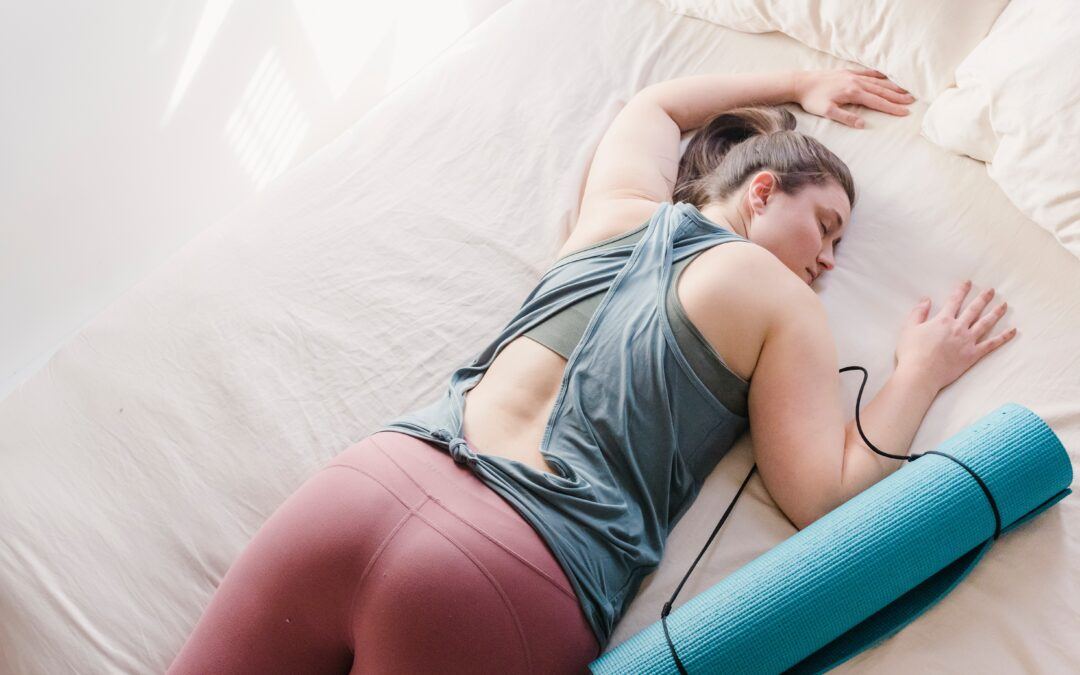You are probably reading this because you are currently dealing with low back pain and you are not ready for an invasive form of treatment. Maybe your doctor told you, “Yoga is good for you,” so here you are, or you just completed your PT sessions and are wondering what you can do now to prevent or manage your lower pain.
If you search about yoga poses on the Internet, you might have thought: “That all looks beautiful, but I can’t even touch my toes,” and so going to a local yoga practice amongst very bendy yogis just seems out of the question for now.
No problem—we’ve got you covered! You arrived at the right place!
But you don’t have time to read a whole blog right now; let’s jump right over to a 30-minute FREE YOGA CLASS designed to help YOU! CLICK HERE
Who Do I Think I Am?
Why do I think I can help you? I have worked with and am still working with people in pain, many of whom have low back pain (LBP). I have helped people with LBP IN-PERSON, weekly, for almost two decades now. The yoga poses you will find here are based on my experience working with real people, who provide helpful feedback and insight. And believe me, they tell me if something doesn’t work ;-).
The Big Picture of Pain in the Lumbar Spine
Let’s zoom out to get a bigger picture of the relevance of choosing yoga for low back pain.
An estimated 7.5 % of the global population is currently dealing with LBP, a whopping 577 million people you have something in common with. “Misery seeks company,” isn’t that what we say? The World Health Organization (WHO) predicts this number to go up to 843 million by 2050. The main factors in this estimate are population expansion, aging, and the INCREASING LEVEL of INACTIVITY.
One thing we can do right now to reduce this number is to BE ACTIVE!
Based on an American Academy of Orthopedic Surgeons (AAOS) report, about 500,000 lumbar spine operations were performed in the US in 2022.
These included:
Spinal Decompression or Fusion
Discectomis (removal of herniated disks)
Laminectomy (remove a portion of the lamina)
Artificial Disk Replacement
Common Causes for Low Back Pain
If you look around the Internet, you will find listed under the causes of LBP things such as hereditary predisposition, obesity, or smoking, which are all relevant.
However, the leading cause of this kind of pain is repetitive, non-beneficial body posture. It might be inactive, like sitting at your desk for hours, or active, like working construction or pulling weeds! Many students come to my class with aggravated pain because of getting rid of weeds in their backyards.
Does Yoga Help to Relieve Low Back Pain
Let me show you some research results of randomized clinical trials and meta-reviews (here they look at several trials simultaneously) on this topic.
1) The Effect of a Stretch and Strength-Based Yoga Exercise Program on Patients with Neuropathic Pain due to Lumbar Disc Herniation, a randomized controlled trial:
Forty-eight patients with neuropathic pain underwent a patient education program and performed yoga exercises for one hour twice weekly for 12 weeks.
“The intention-to-treat analysis showed a statistically significant difference in neuropathic pain, patient global assess meet, low back pain, disability, and function in favor of the yoga group at post-treatment.”
2) Yoga Compared to Non-exercise or Physical Therapy Exercise, a meta-analysis of 18 randomized controlled trials:
“Yoga could significantly reduce pain at 4 to 8 weeks, 3 months, 6 to 7 months, and was not significant in 12 months compared with non-exercise. Yoga was better than non-exercise on disability at 4 to 8 weeks, 3 months, 6 months, and 12 months.”
3.) Effects of Mindfulness-Based Stress Reduction ( MBSR) vs Cognitive-Behavioral Therapy and Usual Care on Back Pain and Functional Limitations among Adults with Chronic Low Back Pain: a randomized clinical trial:
(I am including this because mindfulness is essential to every existing yoga practice.)
342 randomized participants attended 6 or more of the 8 sessions, 294 (86.0%) completed the study at 26 weeks, and 290 (84.8%) completed the study at 52 weeks.
MBSR showed a statistically significant difference in neuropathic pain, patient global assessment, low back pain, disability, and function in favor of the yoga group at post-treatment.”
In plain English, I think you get my point!
My Personal Experience Helping People with Low Back Pain
If you experienced LBP after pulling weeds for a few hours, and having had no previous issues with LPB, yoga will help you 100% of the time to say goodbye to the pain in just a few minutes. The same is true if you have been sitting at your desk or on an international flight for too long. An occasional prolonged unhealthy posture can be corrected with yoga in very little time.
However, if life circumstances have forced you to sit for hours or have worked bending forward for years, these long-term circumstances can lead to structural changes in your lumbar region. Adult onset scoliosis, spondylosis, or herniated disc are a few examples of these changes.
Depending on the severity and chronicity of the alterations, yoga can help reduce pain, improve functional mobility, and increase the quality of your life. Yet, you will have to practice regularly for a longer time to feel the results.
That being said, I suggest including other healing modalities such as acupuncture, chiropractic care and massage therapy in your treatment protocol for best results. Sometimes, it does indeed take a village!
If your pain is caused by any form of additional growth, like a cyst, a bone spur, or a tumor pressing on a nerve, then yoga might not relieve enough pain. But you may still benefit from yoga as a supporting treatment protocol if your doctor gives you the green light.
Yoga Poses for Low Back Pain
Let me show you a few very effective poses I frequently use in my classes. I am going to explain WHY these poses are beneficial for you. You will find videos of these poses explaining HOW to perform them on my YouTube channel.
Or are you ready to try a 30-minute low-back pain-release yoga class right now? CLICK HERE
Standing Poses
1) Chair Pose with a Block
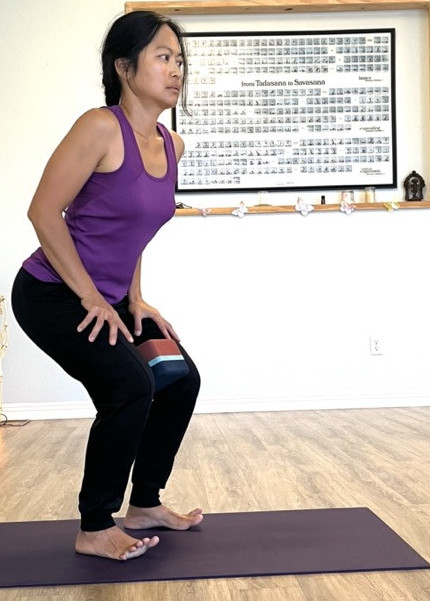
Using the block in this pose will help you tone the adductors of the muscles on your inner thighs. The most common cause of lower back pain is a lack of stability in the lumbar region. Meaning the muscles of the hip and back area need to be stronger.
Rose (our yoga model) demonstrates well how bending the knees and keeping weight on the heels allows the lumbar spine to curve. When we bend forward during numerous activities, the lower back becomes flat or rounded, which when done regularly, eventually leads to problems. She keeps the muscles of her lower body firm to increase stability. Watch the video (link) to listen to the instructions on how to do this. Or even better, could you DO THE POSES?
2) Side Body Stretch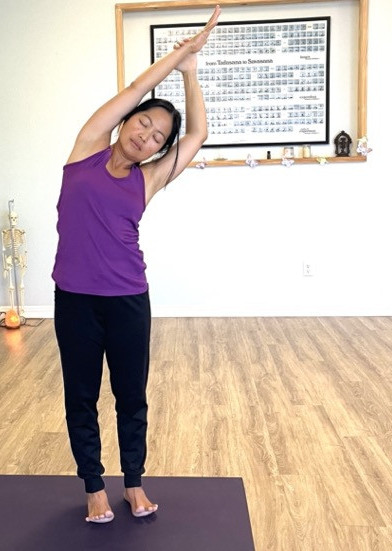
As the name already says, the side body muscles are lengthened in this posture. I want to mention only one specific muscle here, Quadratus Lumborum. It attaches to the top of the hip bones, all 5 lumbar vertebrae, and your lower ribs. When you bend to the side, this muscle will be released and can reduce uneven pull on your lower spine. Plus, it will allow you to take a deeper breath with more oxygen! What’s not to love 🙂
3) Warrior Three on the Wall
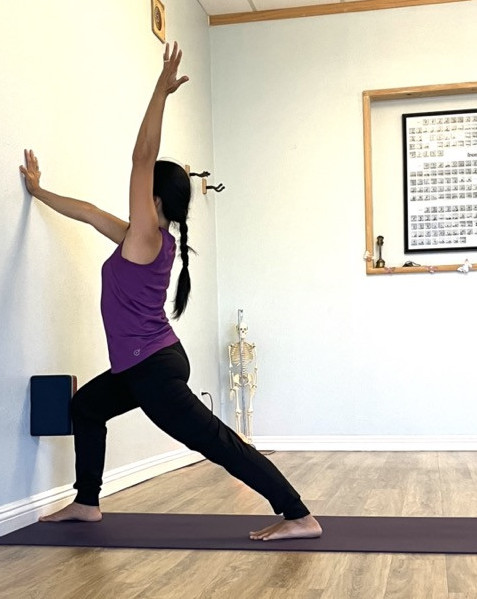
A natural curve and sufficient muscle tone in the lumbar region are essential to relieve pain, which is the goal of this pose. You can see that her lower back is not flat nor overly arched. Lifting the leg will tone the hamstrings, gluteus maximus, and, very importantly, the muscles closest to the lumbar vertebrae.
4) Warrior Pose One on the Wall

As we discussed earlier, bending forward or slumping over your desk when sitting for hours is often the cause of a misaligned lower back. The hip flexors (muscles on the front of the hip doing the bending forward action) are shortened and weakened when sitting. Once you stand upright, they can pull on your lower back, creating tension and, eventually, causing pain. This pose is doing the exact opposite! From the back foot to the hand, the whole front chain of your body will be stretched and provide significant relief for you. We tend to round and bend even more forward (like sitting) to release LB tension. Yet, you have to move the opposite way to find balance again.
Floor Poses
Floor poses are safe and effective in relieving lower back pain because the upper body weight does not press on the lumbar region. The PSOAS muscle attaches to all five lumbar vertebrae that cross the hip joint to reconnect to the inner thigh bone (femur). This guy can be a huge troublemaker. If it shortens and tightens over time because we have to sit for hours each day, YEP, you got it—LBP will be the result. This supported bridge pose works wonders to release the psoas and help you feel better.
1) Supported Bridge Pose (variation A)

2) Supported Bridge Pose (variation B)
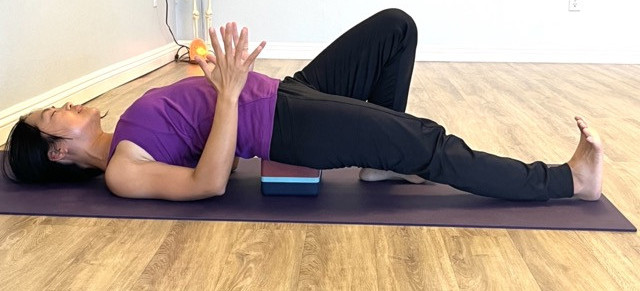
The same is true for this pose. You can see the similarities. Extending one leg to the floor, you actively stretch this hip flexor (psoas). I love this one because it works so well and feels great.
3) Supine Low Back Stretch Pose
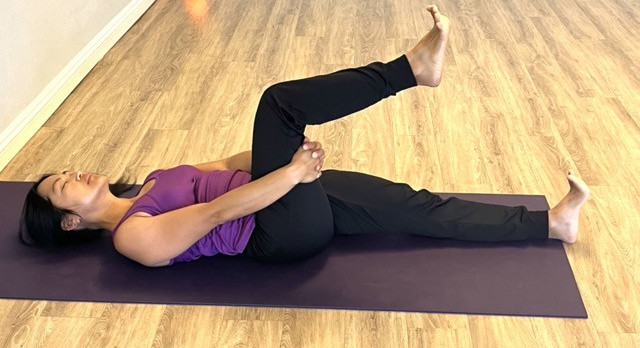
In many cases, decreased space between the vertebrae due to degeneration causes lower back pain. Your back may feel tight, or you may have a dull, achy pain or a shooting pain. This pose provides the space you need in the lumbar spine region to experience some relief, and it allows you to relax after the pose.
4) Final Relaxation Pose
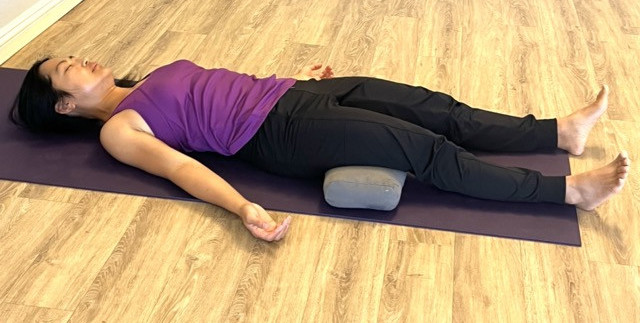
At last! Time to relax! Placing a bolster, block, or blanket under your thighs will bring your spine into its natural shape. Healing occurs when you relax—in RELAXATION and in a BENEFIAL BODY SHAPE. Taking time to REST after your yoga practice is best for your body to heal. I will explain this in more detail in the webinar. Here’s a hint: Your para-sympathetic nervous system is in charge of “rebuilding” and does this when you are resting!
If you have made it this far, Congratulations! You are ready to take action on your path to healing.
Let’s start by trying out the poses for yourself. Let me know if you could do them and if they helped. Remember what I mentioned before: the nature and chronicity of your pain play a considerable role in how much these poses help you and how often you need to practice them before you notice any results. Be patient and kind to yourself as you start participating, and take responsibility for your healing processes and your WELL-BEING!
I am here to help you or to point you in the right direction if you are still trying to figure out what to do next.
Let’s do this, and I’ll “see you on the mat.”
Much Love, Doreen
Yoga For Low Back Pain Release
Even is you have never done yoga before
THIS CLASS IS FOR YOU!
Just give it a go.
